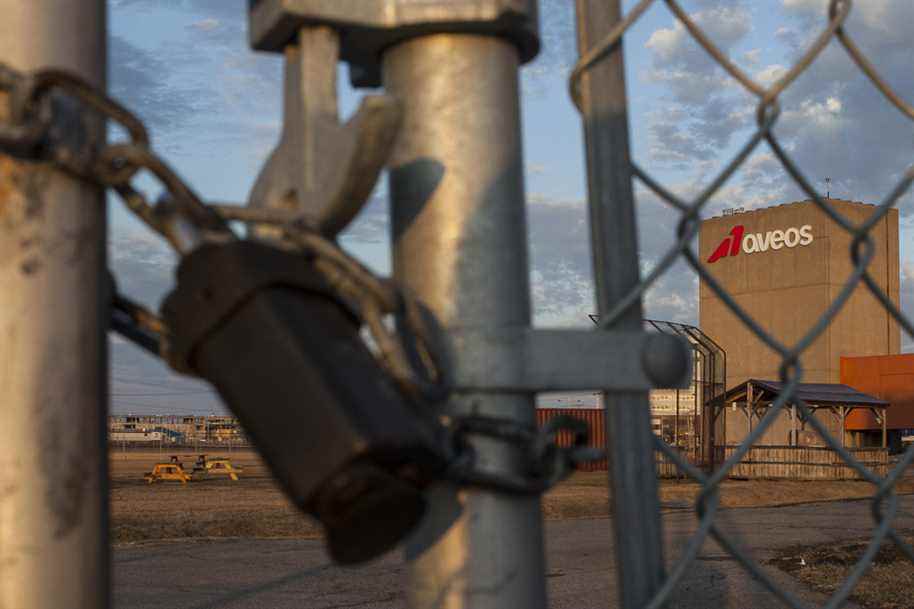The aircraft maintenance niche did not completely take off almost a decade after Aveos went bankrupt. Despite everything, some projects that could have allowed this sector to regain altitude do not seem to want to take off.
In Quebec, players such as AAR (cells), Avianor (cells), AJW Technique (components), Lockheed Martin (engines) and Premier Aviation (maintenance) have carved out a place for themselves since the sudden disappearance, in March 2012, of Aveos – which had some 1,800 employees in Montreal.
However, they are not the size of Air Canada’s former technical services division. In Montreal, it performed heavy maintenance on single-aisle and jumbo jets, engines and components for the country’s largest airline, which was its main customer.
“With Aveos, there was a nucleus,” recalls Mehran Ebrahimi, professor at UQAM and director of the Observatory of Aeronautics and Civil Aviation. “This expertise is lost. ”
To carve out a place abroad, a maintenance specialist must be able to link up with a major transporter, adds the expert. He gives the example of Lufthansa Technik, which maintains the planes of the German giant Lufthansa.
Air Canada was behind two projects in Quebec, but progress has been tentative. Its commitment made in 2016 to allow the creation of a “center of excellence” in Quebec for the Airbus A220 is slow to materialize.
As for the other initiative, it was conditional on the takeover of Transat AT by Air Canada, which ended in failure. The maintenance of the wide-body A330s operated by the two companies – work carried out outside the country – would have been entrusted to AAR in Trois-Rivières.
“We don’t have the impression that this project will go ahead,” says Stéphane Rochette, vice-president of operations at AAR. If it had worked, we would have had to invest millions of dollars in a new hangar. ”
Already responsible for the maintenance of Air Canada’s A320 family of aircraft, AAR, which has some 350 employees at its 150,000-ft facility2, would also have obtained the contract to maintain Air Transat aircraft.

PHOTO FROM AAR SITE
In the aircraft maintenance niche, AAR is one of the players with its hangar in Trois-Rivières.
Asked by Press, the two companies, which operate a total of 30 A330s, do not seem to want to come to a separate agreement with AAR to bring work back to Quebec.
Due to the COVID-19 pandemic, which has forced many carriers to reduce the size of their fleets, Mr. Rochette wonders if the volume would have been sufficient to justify the construction of a new hangar.
“It takes us a non-stop production line all year round,” he says. It’s a question of volume. That of one [Air Canada] would not be enough. The volume of the other [Transat] no more. ”
Shy steps in Mirabel
In Mirabel, near the factory where Airbus assembles the A220s, Avianor has obtained the mandate to perform heavy maintenance on the 35 A220s purchased by Air Canada. Work has just started on a first device.
“We recently reaffirmed to Avianor our commitment to work with them to enable them to establish a center of excellence at Mirabel for Air Canada’s new A220 fleet,” said the spokesperson for the carrier in an email. , Pascale Déry.
However, it is unclear how this commitment will materialize. One thing is certain, Avianor, whose workforce is 350, will have to attract other carriers. Most major A220 operators, such as Swiss, Air Baltic, and Korean Air Lines, perform maintenance on the aircraft themselves or with other suppliers.
Opportunities could arise with two US airlines that have bet on the A220: JetBlue and Breeze Airways. The first did not answer questions from Press, while the second indicated that Avianor was among the options.
“Our objective is to support a growing fleet of this program in North America,” said Jean-François Guay, vice-president and sales manager at Drakkar aeronautics & transport, owner of Avianor, in an email.
He declined to offer details regarding JetBlue and Breeze.
The letter of intent that was announced by Air Canada with Avianor in February 2020 indicated that the maintenance company was conducting studies to build a new 250,000 sq. Ft. Hangar.2 in Mirabel. It was not possible to know if this project was still under consideration.
“Aveos was an ecosystem like Lufthansa Technik,” recalls Jean Poirier, spokesperson for former Aveos workers. A decade later, this ecosystem has disappeared. We are no longer in the National League. ”
Mr. Poirier, who was piloting a maintenance center project near Saint-Hubert airport – which has since been abandoned – finds it difficult to see how Quebec can once again become an “international player” in the maintenance niche.
He and Mr. Ebrahimi, from UQAM, however underlined the resilience of the various players still present in Quebec, who manage to continue their activities despite numerous constraints.
3
Number of facilities operated by Aveos, with an estimated workforce of 2,600 at closure. In addition to Montreal, Aveos was located in Mississauga, Ontario and Winnipeg, Manitoba.

